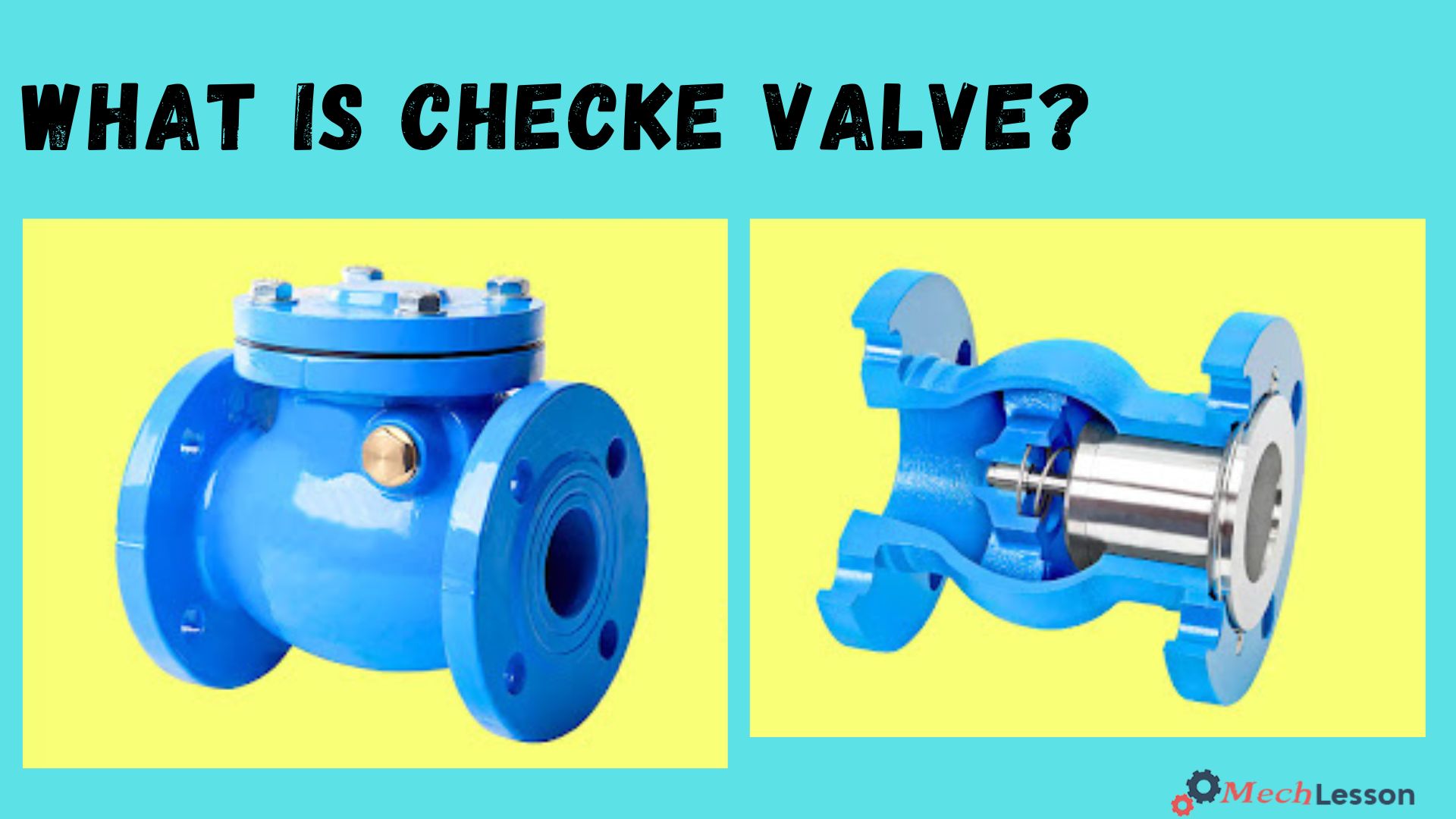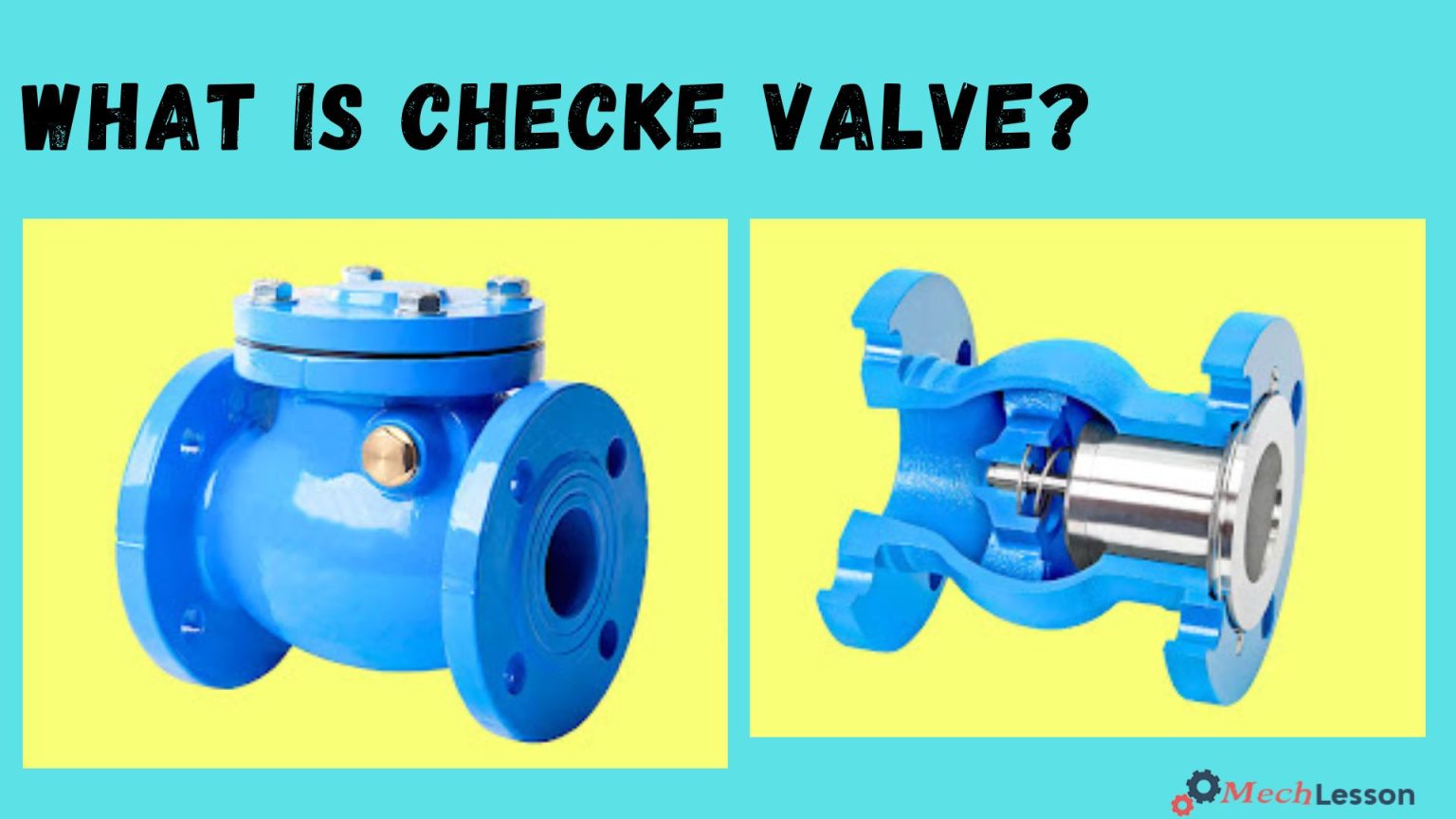A check valve, also known as a non-return valve, reflux valve, retention valve, foot valve, or one-way valve, typically permits only one direction of fluid (gas or liquid) passage.
Self-acting check valves allow passage when the fluid system is pressurized and stop backflow when the system pressure is released. These are unidirectional valves, which open with the fluid and close the other way.
Well, in this reading, we’ll explore what a check valve is, its applications, parts, diagrams, types, advantages, disadvantages, and how it works. We’ll also explore how to choose the right check valve, maintenance, and common check valve issues.
Let’s begin!
Learn about Diaphragm Valve with this detailed guide!
What is a Check Valve?
Just as mentioned earlier, a check valve typically permits only one direction of fluid (gas or liquid) passage. It is a self-acting valve that allows a passage and prevents a backflow when pressurized by the fluid system and when the pressure is off.
Check valves have two openings in their body—one for fluid to enter and one for fluid to exit—making them two-port valves. Various check valve types are employed in a broad range of applications.
Check valves are frequently found in everyday home objects. Check valves come in a variety of sizes and prices, but they are often relatively tiny, straightforward, and affordable.
The majority of check valves don’t have a handle or stem since they operate automatically and are not operated by humans or any external controls. The majority of check valves have metal or plastic bodies (external shells).
The cracking pressure, or the lowest upstream pressure differential between the inlet and output at which the valve will operate, is a crucial idea in check valves.
The check valve is usually made to withstand a certain cracking pressure; thus, it may be specified for that pressure. Note: The primary function of a check valve is to allow flow in one direction.
You should also learn about Globe Valve with this detailed guide!
Functions and Applications
Based on the function of a check valve, they are used to prevent the backflow of fluid that can create damage to an application. They also prevent contamination because of the backflow of the fluid.
A type of check valve can help to avoid the siphoning action in a pipeline and also maintain the vacuum seal. The check valve also ensures the fluid pathways are secure and efficient.
Check valves are customizable to meet certain requirements, which is why material suitable for corrosive environments can be used.
They can be used in various industries due to their simple mechanism and reliability. This is why check valves can be used in water and wastewater treatment for regulating the flow to prevent contamination and controlling the water pressure.
Check valves are used in the oil and gas industry to prevent the reverse flow of oil back to the pipeline, pump, and storage tank.
These valves are widely used in the HVAC system for managing the airflow and refrigerant areas for proper heating and cooling ventilation. The applications of the system extend to the chemical manufacturing industries for safe handling of corrosive and high-pressure fluids.
The food and beverage processing industry also used check valves to maintain hygiene because they help to prevent backflow of contaminants into the supply lines.
Parts and Diagram
The component of a check valve depends on its type. However, the major parts of check valves include the valve body, seat, disc or poppet, spring or diaphragm, and inlet and outlet ports.

You should learn about Gate Valve with this detailed guide!
Types of Check Valves
The various kinds of check valves include
- Lift Check Valve
- Ball Check Valve
- Swing Check Valve
- Stop Check Valve
- Wafer Check Valve
- Silent Check Valve
- Pneumatic Check Valve
- Non-slam Check Valve
- Diaphragm Check Valve
- Spring-Loaded Check Valve
- Spring-loaded in-line valve
- Top-hinged Check Valve
- Tilting Disc Check Valve
- Butterfly Check Valve
- Spring Loaded Y-valve
- Foot Check Valve
- Duckbill Check Valve
How Does a Check Valve Work?
In the working of a check valve, two ports are featured: one for the media’s input and one for its output.
They are frequently referred to as “one-way valves” or “nonreturn valves” since they only let media flow in one direction. A check valve’s primary function is to stop system backflow.
A pressure differential is necessary for a check valve to work properly. To open the valve, they need to apply more pressure to the input side than the output side. The valve will close when the output-side pressure is higher or the input-side pressure is insufficiently high.
The closure method varies according to the kind of valve. In contrast to other valves, they may function properly without a handle, lever, actuator, or person.
They are frequently set up in situations where backflow would be an issue. Nevertheless, because they are non-return valves, they offer an inexpensive, practical, and simple way to address a possible problem. If the backflow is tainted and contaminates the medium upstream, it might be problematic.
You should also learn about Butterfly Valve with this detailed guide!
Advantages and Disadvantages of Check Valves
A non-return valve, for instance, is installed in a sewage pipe to allow waste to exit but prevent it from returning to the system. They are also employed when backflow threatens to harm upstream equipment that only permits unidirectional media flow.
For instance, a one-way valve is placed downstream to stop water from passing through a reverse osmosis filter, which can only do so in one direction. To guarantee that there is a check valve for any application, they come in a variety of sizes, styles, and materials.
The horizontal check valve is a self-actuated, fast-acting system designed to prevent backflow and reduce downtime in water systems. It can be used horizontally and vertically. It also prevents water hammer and sudden valve failure.
However, it does not operate in pulsating systems, can cause damage to the closing element, and can be difficult to check if the valve is open or closed. It also has limitations such as noise, water hammer, and reverse flow problems.
Learn about Ball Valve with this detailed guide!
FAQs
What is the purpose of a check valve?
Check valves are generally installed in pipelines to prevent backflow. A check valve is basically a one-way valve, in which the flow can run freely one way, but if the flow turns, the valve will close to protect the piping, other valves, pumps, etc.
What are the types of check valves?
There are various types of check valves out there, but they work similarly:
- Swing Check Valves
- Wafer Check Valves
- Tilting Disc Check Valve
- Ball Check Valves
- Butterfly Valves
- Lift Check Valves
- Silent Check Valves
- Duckbill Check Valves
What flow is a check valve used for?
Check valves are installed in pipelines to prevent backflow. A check valve is basically a one-way valve in which the flow can run freely one way, but if the flow turns, the valve will close to protect the piping, other valves, pumps, etc. If the flow turns and no check valve is installed, water hammer can occur.
Where do you put a check valve?
Proper check valve installation position is very important for the proper operation of the piping system. Check valves should be installed at the beginning of pipelines, at the outlet of pumps or pressure sources, and at high and low points in elevated and horizontal pipelines.
When would you use a check valve?
By preventing reverse flow, check valves prevent the mixing of different media between two reservoirs. For example, in a water treatment plant, check valves prevent treated water from flowing back into the untreated water reservoir.

